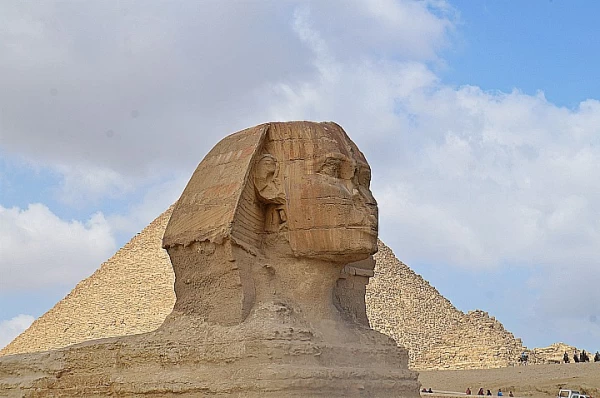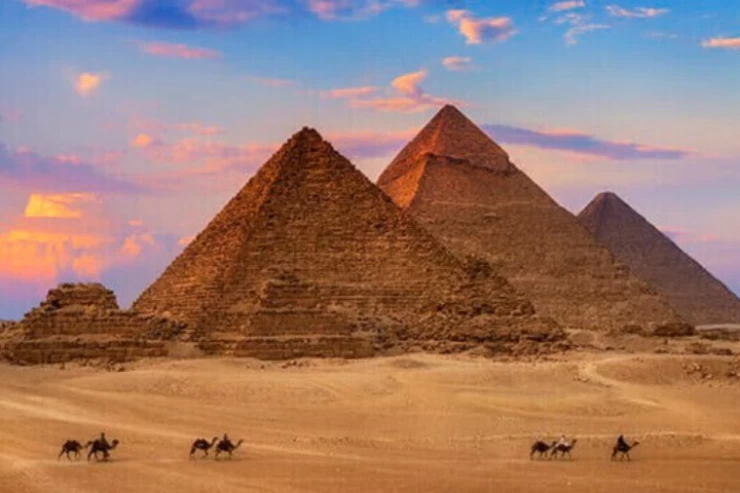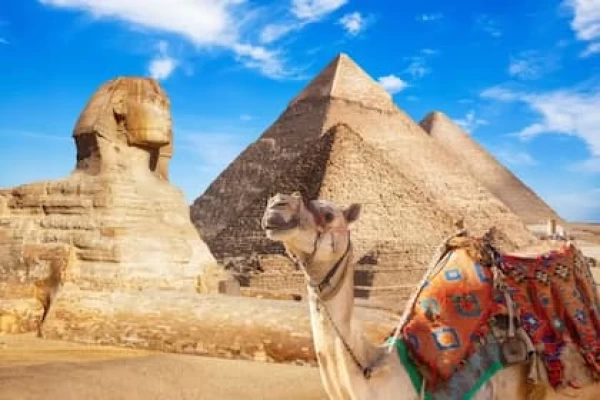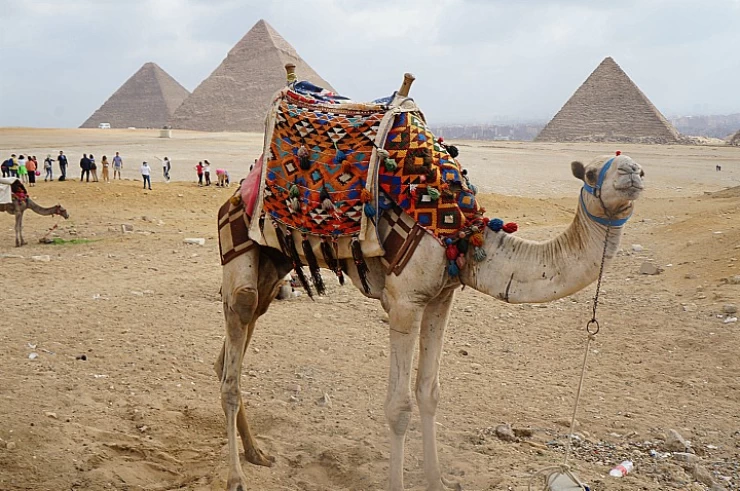
As Esfinges no Antigo Egito
Esfinges no Egito Antigo
A Esfinge é um dos monumentos históricos mais famosos da República Árabe do Egito e, especificamente, da cidade egípcia de Gizé, devido à sua aparência única e à sua localização exclusiva perto das pirâmides de Gizé, que é um dos símbolos mais importantes da antiga civilização egípcia, juntamente com essa estátua histórica, Muitos historiadores e arqueólogos apontam que essa grande estátua pertence à antiga civilização egípcia e, especificamente, ao período de governo da Quarta Dinastia que governava o Egito naquela época, e alguns deles datam a propriedade dessa estátua ao Rei Khafra, um dos antigos reis e governantes egípcios.
Essa estátua da Esfinge foi esculpida em um único bloco de pedra e foi formada com o corpo de um leão, representando a força, e a cabeça de uma pessoa, representando a inteligência, o que a fez combinar, em um gênio único, a força do animal com a inteligência do homem, representada pela pessoa do rei reinante do Egito como filho do deus Amun Rá, o Senhor do Sol Sagrado.
A estátua está sem o queixo, alguns dos quais são exibidos em esfinges no Museu Egípcio na Praça Tahrir e no Museu Britânico em Londres, e em frente a "Abu Hool" há restos arquitetônicos de um templo inacabado de tamanho considerável, e esse templo remonta à era da Quarta Dinastia.
Na era do Novo Reino, as estátuas da "Esfinge" com a cabeça de um carneiro ou a cabeça de um falcão se espalharam para a frente dos templos de Luxor e Karnak. E o rei Tutmósis IV, da décima oitava família do estado moderno, montou uma pintura de sonho entre as duas garras da estátua de Abul-Hall em Gizé para apoiar sua ascensão ao trono do Egito com base na fabricação de uma história que confirmava o apoio do deus para que ele se tornasse o próximo governante do Egito naquela época.
As campanhas lideradas por Tutmósis III na Ásia tiveram um grande impacto no desenvolvimento das estátuas da Esfinge. Pela primeira vez, apareceu a Esfinge vitoriosa que pisoteava seus inimigos, e somente nessa época a Esfinge abandonou sua cabeça humana e a substituiu pela cabeça do lendário cão ou por cabeças de carneiros, como as que estão na entrada do templo de Karnak.
Na era greco-romana, surgiram três tipos diferentes de "formas" das estátuas da Esfinge, uma das quais é o estilo egípcio puro, que é um estilo que não mudou em relação à forma tradicional da Esfinge, que era conhecida em épocas anteriores. A terceira era uma mistura entre os egípcios e os gregos. O cocar da estátua é puramente egípcio, enquanto as garras e as pernas cruzadas são gregas.
As esfinges não foram usadas ao longo dos tempos somente no Egito, mas também fora do Egito, por dois motivos. O primeiro são as relações comerciais e o segundo é a extensão do estado egípcio para seu controle e influência que alcançou o sul das montanhas da Anatólia. Em seguida, uma estátua de marfim de Ninrode apareceu na Assíria.
The Sphinx is one of the most famous historical monuments in the Arab Republic of Egypt and specifically in the Egyptian city of Giza, due to its unique appearance and its unique location near the pyramids of Giza, which is one of the most important symbols of ancient Egyptian civilization along with this historical statue, and many indicate History and archeologists point out that this great statue belongs to the ancient Egyptian civilization and specifically to the period of the rule of the Fourth Dynasty that ruled Egypt at that time, and some of them dated the ownership of this statue to King Khafra, one of the ancient Egyptian kings and rulers.
The Sphinx primarily guards the temples where the gods are worshipped. These gods had omniscient powers that enabled them to control the fate of humans and cause phenomena to occur in the world.
This statue of the Sphinx was carved from a single block of stone, and this statue was formed with a lion's body representing strength and the head of a person representing intelligence, which made him combine in a unique genius the strength of the animal with the intelligence of man represented by the person of the reigning king of Egypt as the son of the god Amun Ra, the Lord of the Holy Sun.
The dating of the Sphinx remains a subject of debate; some Egyptologists assume it dates from the reign of Chephren, while other Egyptologists attribute it to the reign of Cheops' son and Chephren's brother, King Djedefre.
In 1936, the Egyptian Egyptologist Selim Hassan discovered the Temple of the Sphinx. It is an unfinished temple, erected to the east of the Sphinx, and is rectangular in plan... The eastern facade of the temple is pierced by two entrances giving access to an open-air courtyard decorated with 24 pillars.
The temple has two sanctuaries, one to the east and the other to the west. Their orientation suggests that one represents the rising sun and the other the setting sun...Note that the 24 pillars of the courtyard may represent the 12 hours of the day and the 12 hours of the night.
The most common version that the cause of the statue's broken nose was the French commander Napoleon Bonaparte during his leadership of the French campaign on Egypt, but there is another older historical account by the historian Taqi al-Din al-Maqrizi, in the fifteenth century AD, which refuted this account.
It was a fanatical Fatimist, who believed that monuments are idols that must be destroyed, as this sheikh carried out a campaign to remove vices and depictions, especially the Sphinx, and he continued to strive to destroy it, until he was satisfied with mutilating its mouth and nose, and the statue remained in this state to this day.


















